Abstract
We have investigated the possibility that alterations in the duration of the systolic preejection period can be used to estimate adrenergic influences on the human left ventricle. The preejection period was determined from high speed, simultaneous recordings of the phonocardiogram, carotid pulse tracing, and electrocardiogram. The preejection period was shortened by isoproterenol, epinephrine, and moderate doses of norepinephrine—all of which activate beta adrenergic receptors—and by cedilanid-D. It was unaltered by changes in heart rate induced by atropine and right atrial electrical pacing. Beta adrenergic receptor blockade by propranolol abolished the shortening effects of the three catecholamines but did not inhibit that due to cedilanid-D. Vasoconstriction, both alpha adrenergic (epinephrine and norepinephrine after propranolol) and nonadrenergic (angiotensin), prolonged the preejection period. Most of the shortening of the preejection period by beta adrenergic receptor activating agents and cedilanid-D and all of the prolongation accompanying pharmacologic vasoconstriction occurred after the onset of the first heart sound, thereby excluding changes in electrical-mechanical delay as a major factor in the observed preejection period responses. Shortening of the preejection period by beta adrenergic activity induced with isoproterenol was dose-related. Increasing doses of propranolol produced parallel shifts to the right in the isoproterenol dose-response curve.
In 37 normal resting subjects intravenous propranolol (10 mg) prolonged the preejection period an average of 10 (SE ± 1) msec. In six patients with psychogenic sinus tachycardia and a patient with a pheochromocytoma the presence of excessive beta adrenergic influences on the left ventricle was demonstrated by the finding of an initially short preejection period which responded with an abnormally great prolongation to beta adrenergic receptor blockade.
Full text
PDF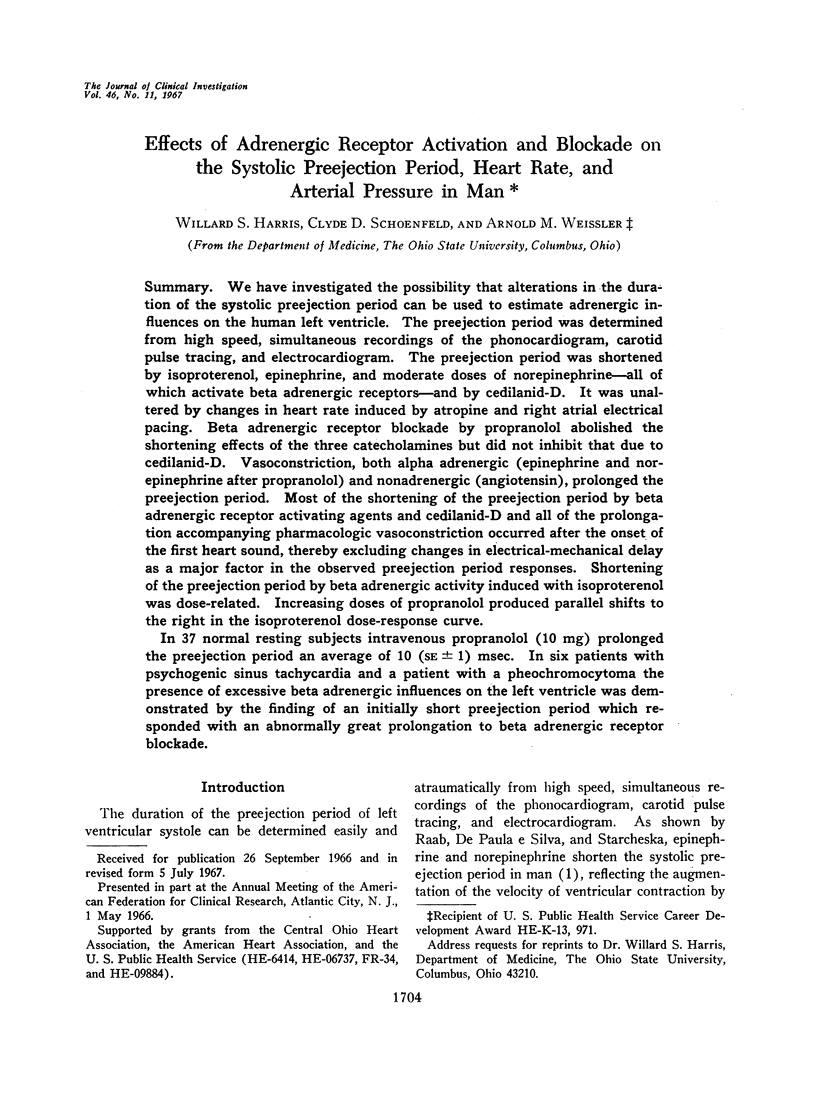

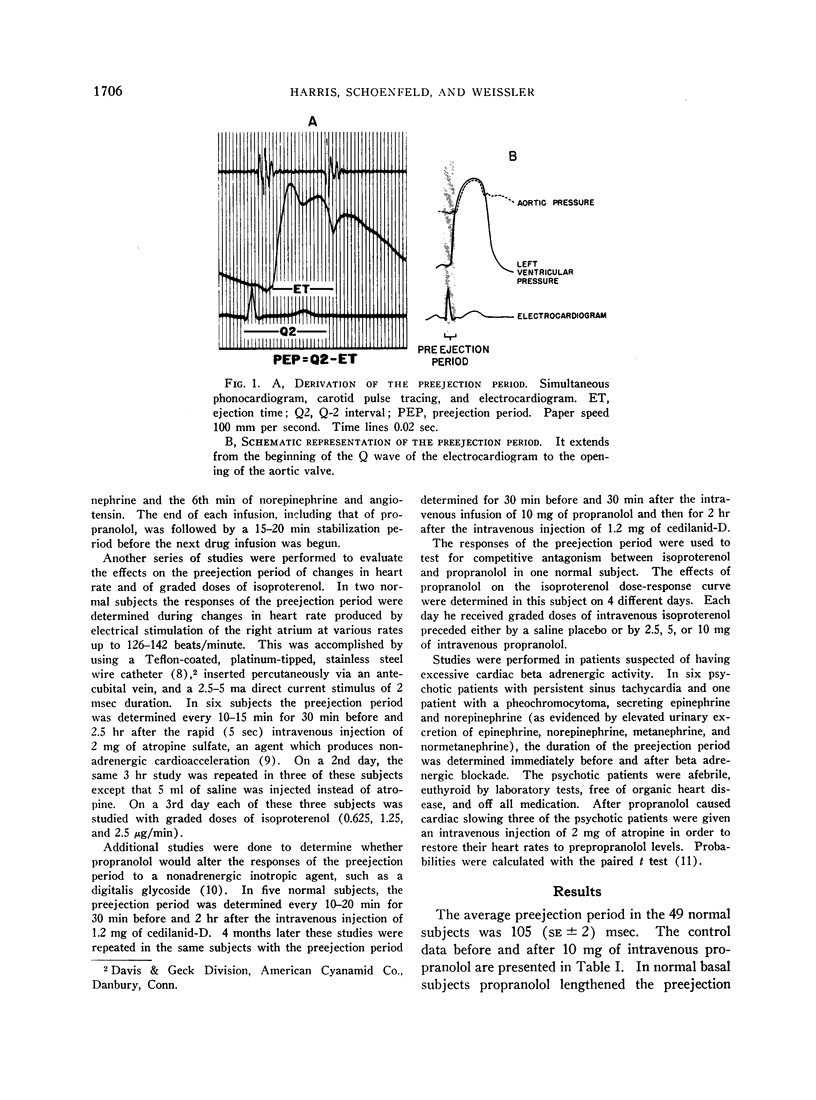
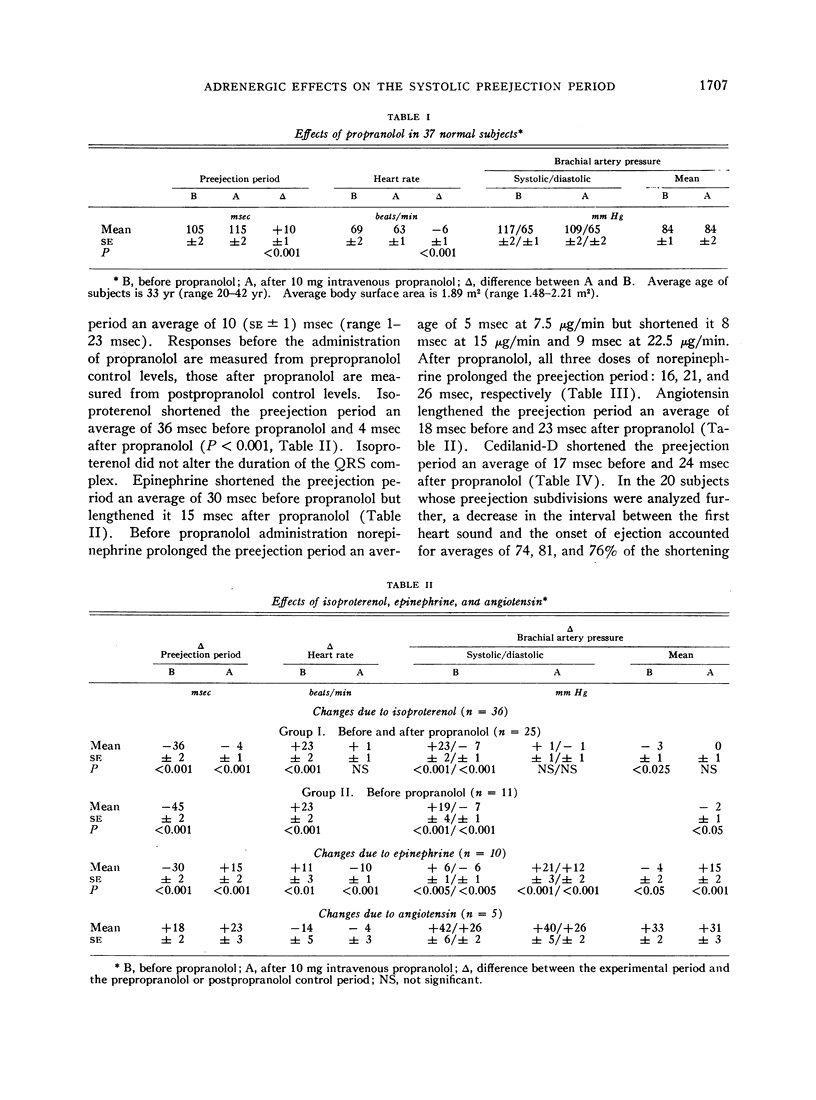
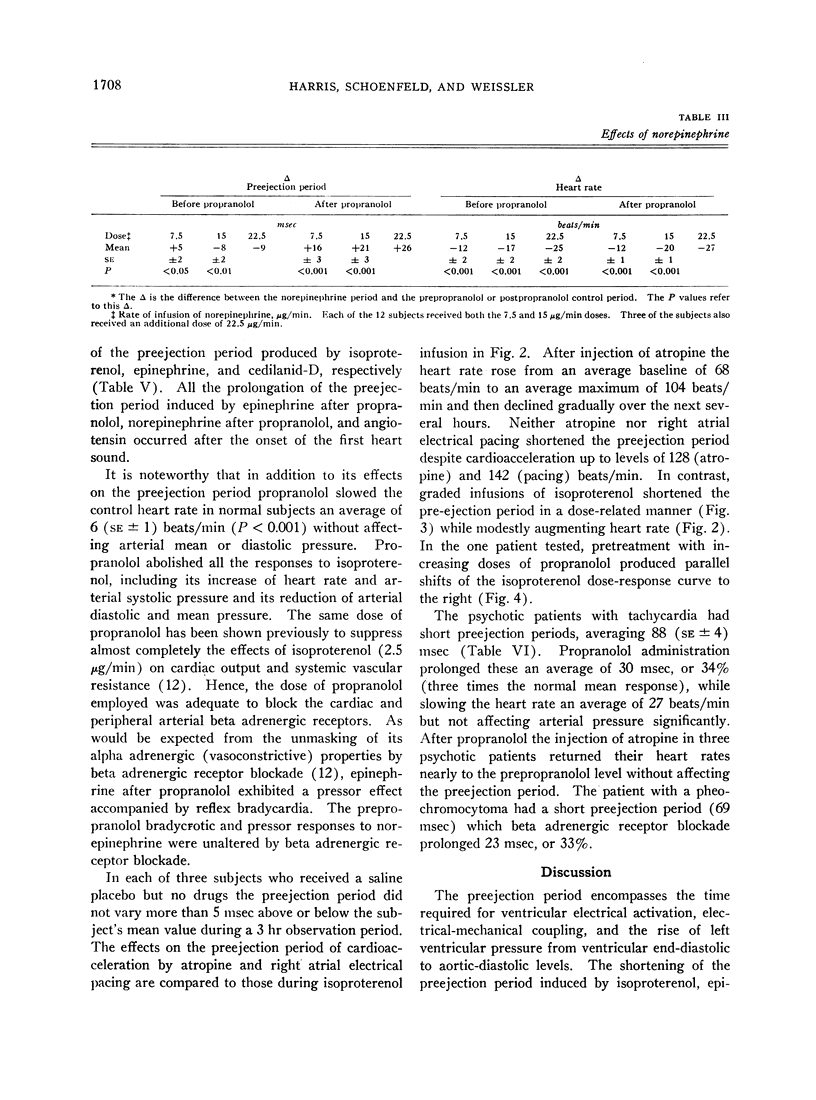
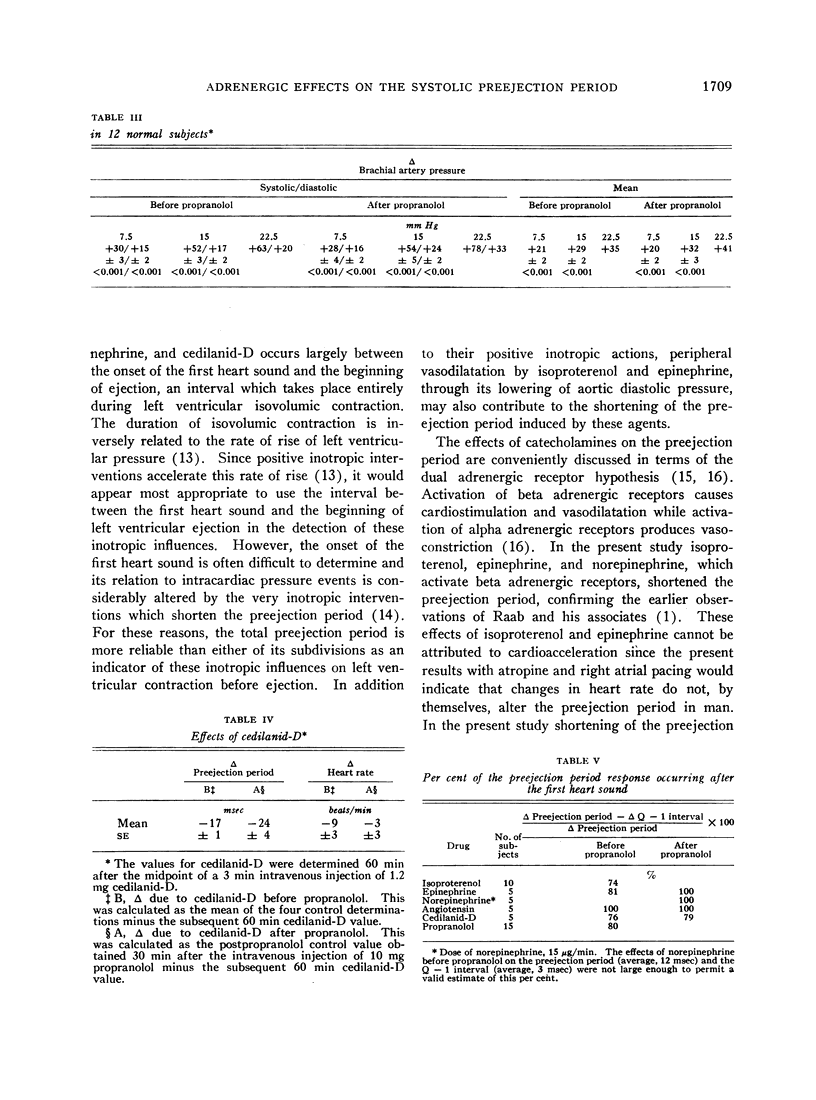
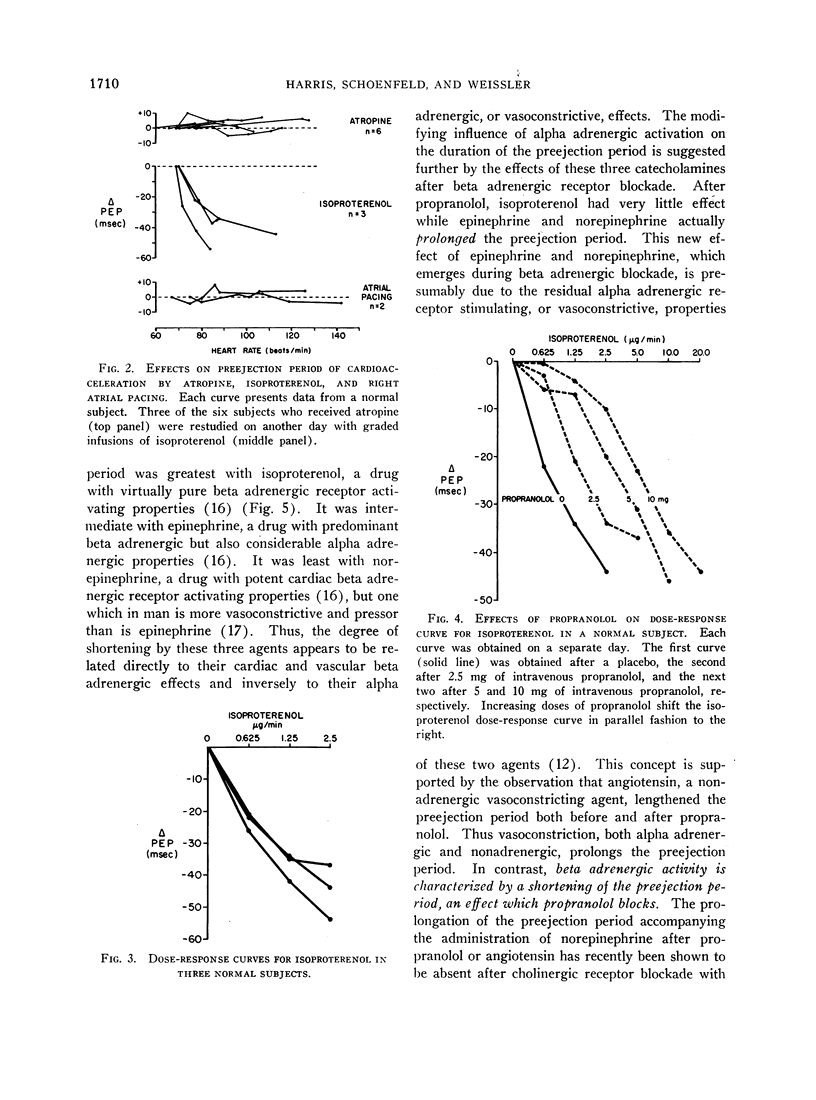
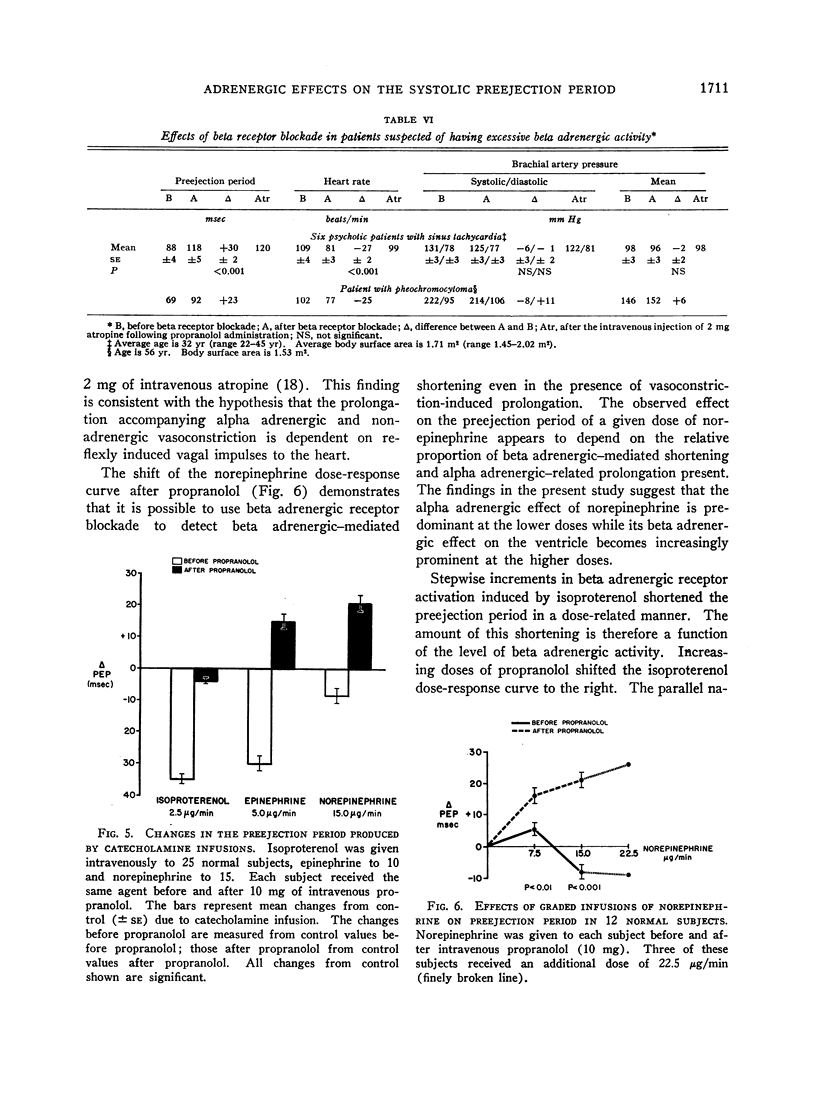
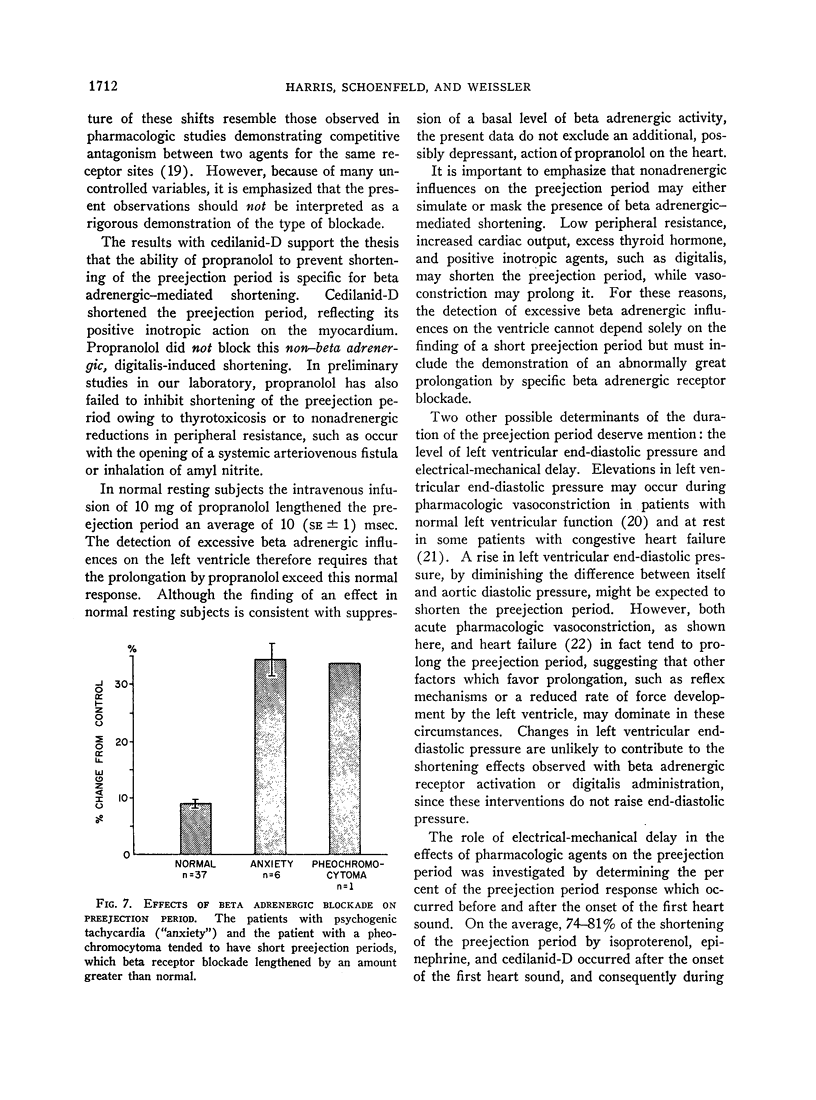
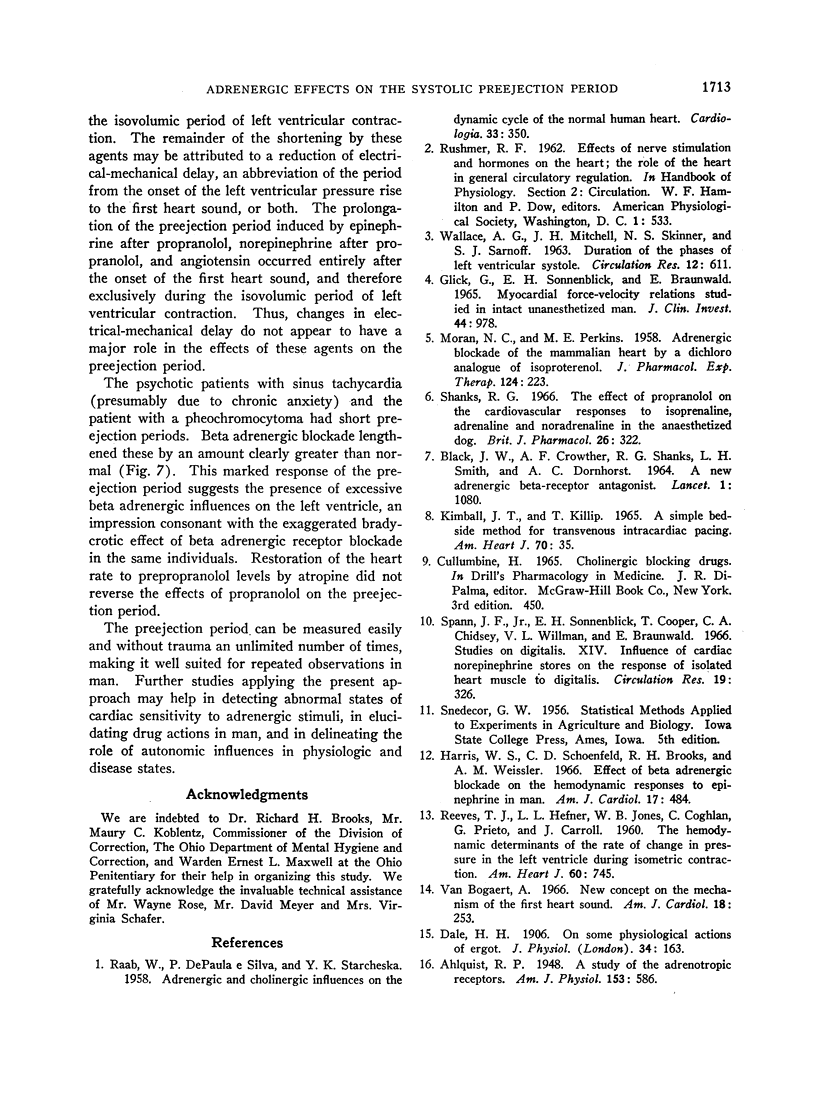
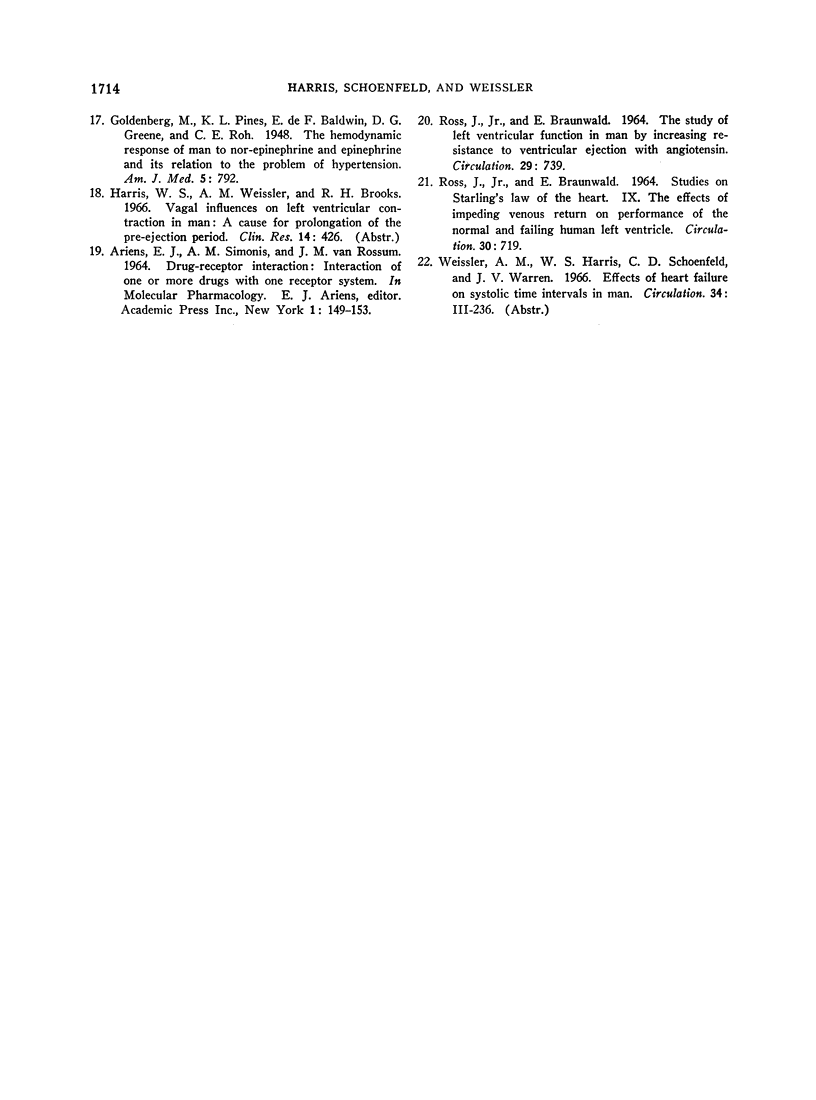
Images in this article
Selected References
These references are in PubMed. This may not be the complete list of references from this article.
- BLACK J. W., CROWTHER A. F., SHANKS R. G., SMITH L. H., DORNHORST A. C. A NEW ADRENERGIC BETARECEPTOR ANTAGONIST. Lancet. 1964 May 16;1(7342):1080–1081. doi: 10.1016/s0140-6736(64)91275-9. [DOI] [PubMed] [Google Scholar]
- Dale H. H. On some physiological actions of ergot. J Physiol. 1906 May 31;34(3):163–206. doi: 10.1113/jphysiol.1906.sp001148. [DOI] [PMC free article] [PubMed] [Google Scholar]
- GLICK G., SONNENBLICK E. H., BRAUNWALD E. MYOCARDIAL FORCE-VELOCITY RELATIONS STUDIED IN INTACT UNANESTHETIZED MAN. J Clin Invest. 1965 Jun;44:978–988. doi: 10.1172/JCI105215. [DOI] [PMC free article] [PubMed] [Google Scholar]
- Harris W. S., Schoenfeld C. D., Brooks R. H., Weissler A. M. Effect of beta adrenergic blockade on the hemodynamic responses to epinephrine in man. Am J Cardiol. 1966 Apr;17(4):484–492. doi: 10.1016/0002-9149(66)90238-4. [DOI] [PubMed] [Google Scholar]
- KIMBALL J. T., KILLIP T. A SIMPLE BEDSIDE METHOD FOR TRANSVENOUS INTRACARDIAC PACING. Am Heart J. 1965 Jul;70:35–39. doi: 10.1016/0002-8703(65)90128-6. [DOI] [PubMed] [Google Scholar]
- MORAN N. C., PERKINS M. E. Adrenergic blockade of the mammalian heart by a dichloro analogue of isoproterenol. J Pharmacol Exp Ther. 1958 Nov;124(3):223–237. [PubMed] [Google Scholar]
- RAAB W., DE PAULA E SILVA P., STARCHESKA Y. K. Adrenergic and cholinergic influences on the dynamic cycle of the normal human heart. Cardiologia. 1958;33(5):350–364. doi: 10.1159/000166357. [DOI] [PubMed] [Google Scholar]
- REEVES T. J., HEFNER L. L., JONES W. B., COGHLAN C., PRIETO G., CARROLL J. The hemodynamic determinants of the rate of change in pressure in the left ventricle during isometric contraction. Am Heart J. 1960 Nov;60:745–761. doi: 10.1016/0002-8703(60)90358-6. [DOI] [PubMed] [Google Scholar]
- ROSS J., Jr, BRAUNWALD E. STUDIES ON STARLING'S LAW OF THE HEART. IX. THE EFFECTS OF IMPEDING VENOUS RETURN ON PERFORMANCE OF THE NORMAL AND FAILING HUMAN LEFT VENTRICLE. Circulation. 1964 Nov;30:719–727. doi: 10.1161/01.cir.30.5.719. [DOI] [PubMed] [Google Scholar]
- ROSS J., Jr, BRAUNWALD E. THE STUDY OF LEFT VENTRICULAR FUNCTION IN MAN BY INCREASING RESISTANCE TO VENTRICULAR EJECTION WITH ANGIOTENSIN. Circulation. 1964 May;29:739–749. doi: 10.1161/01.cir.29.5.739. [DOI] [PubMed] [Google Scholar]
- Shanks R. G. The effect of propranolol on the cardiovascular responses to isoprenaline, adrenaline and noradrenaline in the anaesthetized dog. Br J Pharmacol Chemother. 1966 Feb;26(2):322–333. doi: 10.1111/j.1476-5381.1966.tb01911.x. [DOI] [PMC free article] [PubMed] [Google Scholar]
- Spann J. F., Jr, Sonnenblick E. H., Cooper T., Chidsey C. A., Willman V. L., Braunwald E. Studies on digitalis. XIV. Influence of cardiac norepinephrine stores on the response of isolated heart muscle to digitalis. Circ Res. 1966 Aug;19(2):326–331. doi: 10.1161/01.res.19.2.326. [DOI] [PubMed] [Google Scholar]
- Van Bogaert A. New concept on the mechanism of the first heart sound. Am J Cardiol. 1966 Aug;18(2):253–262. doi: 10.1016/0002-9149(66)90037-3. [DOI] [PubMed] [Google Scholar]
- WALLACE A. G., MITCHELL J. H., SKINNER N. S., SARNOFF S. J. Duration of the phases of left ventricular systole. Circ Res. 1963 Jun;12:611–619. doi: 10.1161/01.res.12.6.611. [DOI] [PubMed] [Google Scholar]




